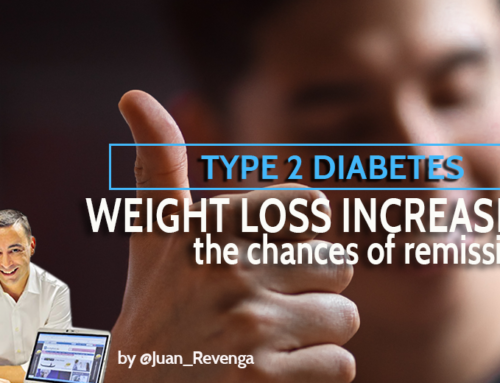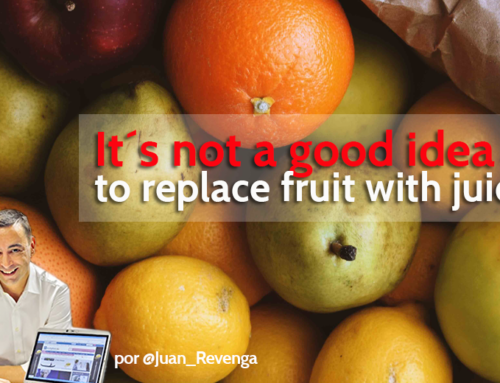4 golden rules to eat well
As indicated in a previous article, the most up-to-date recommendations to eat healthily and prevent the risk of suffering from type 2 diabetes are very similar, if not identical, to those dietary recommendations offered to patients diagnosed with diabetes. To devise a dietary routine for main meals in accordance with those recommendations it is necessary to bear in mind four basic rules.
1st Vegetables low in carbohydrates are in charge… and they win by a mile
In the tool known as the plate method devised by the American Diabetes Association, the provision of fresh vegetables, greens and garden produce low in carbohydrates is a compulsory premise when it comes to putting together a healthy lunch or dinner. For this reason it is necessary to consider that half our plate must be filled with food of this origin. And this “rule” means a big change in the usual dynamics of a person when facing the “dilemma” of what they are going to have for lunch and dinner. Let’s have a look.
Very often the first unknown we try to solve in main meals is whether there will be meat or fish and how they will be presented… grilled, in breadcrumbs, stewed, battered, roast, etc. Well, this is one of the main changes with regard to our usual way of thinking. With this approach the unknown we must clear up first is what food or group of foods from the group of non-starchy vegetables we will use in our menu.
To make an appropriate choice in this matter the options are very wide. We can, for example, turn to any vegetable such as Swiss chard, artichoke, broccoli, Brussels sprouts, cabbage, red cabbage, peas or fresh beans, green beans, bean sprouts, green or white asparagus, mushrooms, pumpkin, cucumber, tomato, peppers, onion, radishes, celery, varied lettuces, lettuce hearts, rocket, spinach, watercress, carrots… and all the other similar foodstuffs, local specialities, etc.
No need to say that in essence any form of presentation is OK, that is, any basic recipe which includes or combines ingredients among these options. I refer for example to being able to present them and eat them stir-fried, roast, grilled, en papillote, as a grilled vegetable salad… but also as part of creamed soups, purées and chilled soups, and of course raw as a salad.
In this respect it is worth mentioning that preference will be given to choosing fresh produce rather than frozen or conserved. There is nothing especially wrong with the latter except that they already come accompanied by sauces or other preparations, in which case it is better to do without them.
2nd Food made with wholegrain or starch-rich cereals

For this it is usually necessary to call upon ingredients obtained from cereals, always in their wholegrain versions or other food not of cereal origin but which are equally rich in starch.
Again we have the opportunity to choose between very diverse options, for example, brown rice wild rice, bulgur or flattened rice, whole wheat pasta in any of its infinite forms, wholegrain oats or, more in the terrain of more exotic cereals, millet, quinoa, sorghum… but also other foodstuffs which do not come from cereals, such as potatoes, tapioca, sweet potato, plantains, etc.
In this case our imagination must also be an ally when it comes to dishing up recipes made with these ingredients which result in pleasant tasty dishes.
3rd Foodstuffs which are a source of healthy protein
Finally we reach the last section, the last “quarter” of our plate, which we are going to fill with foodstuffs which can be a source of healthy proteins. To make myself understood, we reach that element on which people usually place a greater importance, but which in this case we are going to resolve in a way that will probably surprise many people. For this, as well as thinking of animal sources of lean meat, such as fish, meat and eggs, we will also have to consider now the inclusion of pulses. An unjustly forgotten element in many menus but one which encompasses a great source of protein and fibre with a very low fat content. These characteristics are important to bear in mind in today’s nourishment due to the fibre deficit demonstrated in the habitual diet pattern in developed countries.
Like the two earlier cases, it will be necessary to possess some minimum culinary resources to dress and prepare these foodstuffs in appetising recipes.
4th Sticking to healthy habits is the key
We will do little or nothing for our health and risk of type 2 diabetes if we adopt these rules from time to time or if at the same time as following them, the rest of our life beyond lunch and dinner is a disaster.
This way of planning main meals will make sense the moment we consider it part of a more general strategy which also includes the rest of our food and drink intake throughout the day, the following of an appropriate pattern of physical activity and the avoidance of toxic habits such as smoking and excessive consumption of alcoholic drinks.
Also, generally speaking, the eating habits of each person are influenced by culture, religion, ethical, physiological, psychological, social and economic aspects, and of course by individual tastes. If we don’t find a way of supplying an individual answer that can adapt the three aforementioned rules to each person or community, they will serve little or no purpose, because the probability of leaving them by the wayside will be fairly high. To achieve this we need to be aware of our limits and, should the case arise, be able to count on the help of professionals who are specialised in dietary matters, most typically a dietician-nutritionist.
Latest posts by Juan Revenga (see all)
- New hopes of a cure for type 2 diabetes - 16 September, 2016
- Hydration, calories and diabetes: a dangerous triangle - 19 July, 2016
- The myths of breakfast (or the “most important” meal of the day) - 22 June, 2016








